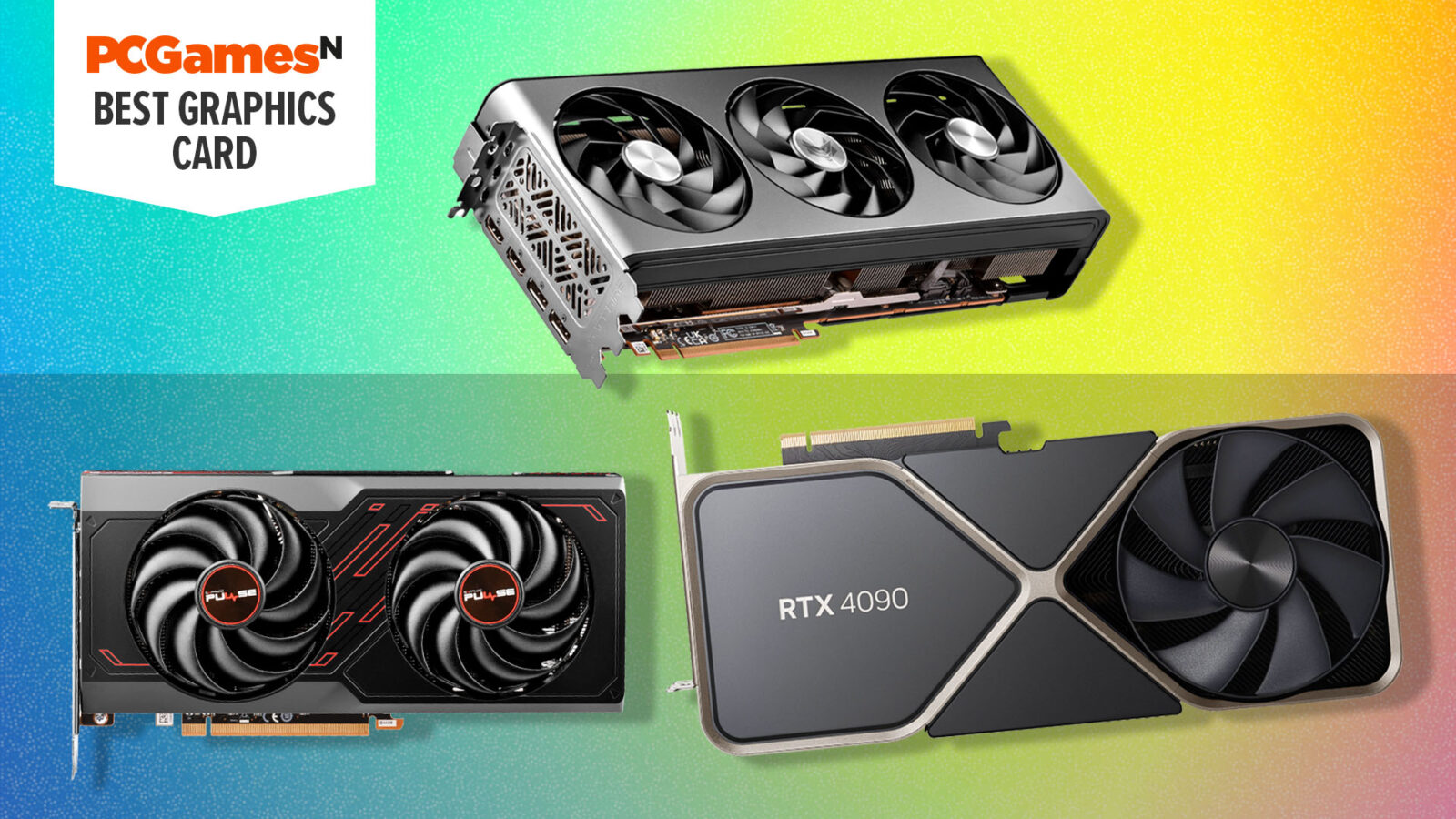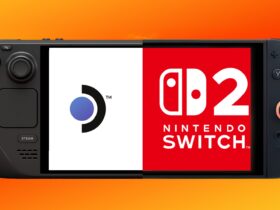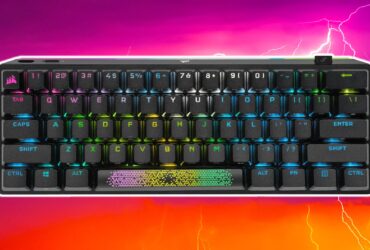What is the best graphics card for gaming? Shopping for a new GPU can mean wading through an often baffling set of numbers in specs lists, as well as weighing up the pros and cons of the different feature sets from Nvidia, AMD, and Intel. That’s where we can help, as we’re not only genuine PC hardware enthusiasts who know our stream processors from our stream decks, but we’re also gamers.
Your choice of GPU will have a bigger impact on your gaming experience than any other PC component and by a long, long way. Yes, it’s always worth making sure you have the best gaming CPU in your system, as well as the best gaming RAM you can afford, but it’s the mighty graphics card that really sits on the throne in your gaming rig, so you need to make sure you nail this choice.
Your GPU is the primary driving force behind the frame rate in your games, and it also determines the resolution and graphics settings you’ll be able to use, including ray tracing and some GPUs are much better at handling these settings than others. There are also features that are exclusive to Nvidia GeForce and AMD Radeon GPUs, such as Nvidia DLSS and AMD FSR, which also need to be considered.
We’ve tested all the graphics cards listed in this guide in a number of different games ourselves, so we can say authoritatively which GPU you should buy for your needs, and why. There are also the Nvidia RTX 5000 GPUs looming on the horizon, with the RTX 5090 soon expected to be the new king of the graphics card world, and the new RTX 5080 hopefully offering decent 4K gaming performance for a much cheaper price when it launches.
The new AMD RDNA 4 GPU lineup is also expected to launch later in 2025, although AMD is rumored to be mainly focusing on mid-range performance rather than high-end 4K gaming with this range.
In the meantime, these graphics cards are the very best ones you can buy for gaming right now, with prices starting at just $249.99 for a great 1080p card, and going all the way up to the mammoth Nvidia GeForce RTX 4090 if you want to play games at 4K with all the eye candy enabled.
Why you can trust our advice 
Best graphics card in 2024:
How to choose a graphics card
The first step to figuring out which graphics card is right for you is the same as every other component: budget. The RTX 4090 is only the fastest option for your system if you can afford it, and knowing how much you can spend on a pixel pusher will help greatly narrow down your options.
Your target resolution, frame rates, and rendering priorities should also guide you. While Nvidia GeForce graphics cards will offer superior ray tracing performance, AMD Radeon GPUs may provide greater value in standard rasterization.
You can get a general sense of what frame rates you can expect from each graphics card performing at different resolutions by reading our reviews. Here are some guiding principles though, to get you started:
- 1080p: 60 and 600 class graphics cards (e.g. RTX 4060 and RX 7600).
- 1440p: 70 and 700/800 class graphics cards (e.g. RTX 4070 and RX 7800 XT)
- 4K: 80/90 and 900 class graphics cards (e.g. RTX 4090 and RX 7900 XTX)
FAQs
What does a graphics card do?
Graphics cards are an essential component of any PC, especially gaming PCs. It’s your graphics card that enables your PC to render and display images. They play a huge role in a PC’s ability to play any specific game.
The more powerful graphics cards use ray tracing technology and AI to process information as quickly as possible and make your games visually stunning.
What is VRAM?
VRAM is an acronym for ‘video random access memory’ and refers to the built-in memory used by graphics cards. Its purpose is to provide your GPU with a separate, high-speed pool of memory that it can use to store data.
More VRAM at your disposal is always a positive as it makes your system less reliant on standard RAM to plug any gaps should your graphics card’s capacity become saturated, thereby reducing the chance of stutters. However, capacity is only part of the story, with the speed of your GPU’s memory and its bus width influencing memory bandwidth.
Most modern graphics cards now come with at least 8GB of VRAM which is usually enough for 1080p gaming, with some exceptions. Higher-quality effects and textures demand higher pools of video memory, though, so we’d suggest opting for a 12GB option if you can afford it.
For those of you gaming at 1440p, 16GB is ideal but 12GB will suit you for the most part. Likewise, 20GB is recommended for 4K, but 16GB will serve.
What is ray tracing?
Ray tracing refers to real-time light tracing to produce more realistic and higher-quality lighting effects than typical rasterized techniques. It has several use cases, including improved shadows, ambient occlusion, reflections, and global illumination.
The first ray-tracing-capable graphics cards arrived in 2018, with the Nvidia GeForce RTX 20 series. AMD joined in on the fun with its Radeon RX 6000 series in 2020, with Intel following with its Arc discrete GPUs in 2022.
Toggling on ray tracing options greatly increases GPU load and can dramatically impact frame rates. As such, it’s typically wise to use them in conjunction with performance-enhancing tools such as Nvidia DLSS, AMD FSR, or Intel XeSS.
What is rasterization?
Rasterization is the process through which 3D models are converted into the pixels you see on the screens of the best gaming monitors. The better a graphics card is at doing this, the smoother your experience of playing your favorite games – when done well, games will look fantastic, when done poorly, games can look blurry and washed out.
Is a GTX or RTX graphics card better?
GeForce RTX graphics cards offer a more feature-rich experience than those sporting a GTX badge and provide superior performance. Comparing GPUs of the same class (e.g. a GTX 1080 against an RTX 2080) will always favor the newer RTX model.
The main distinctions between GTX and RTX graphics cards are ray tracing and DLSS support. Every RTX GPU is capable of using DLSS Super Resolution to boost frame rates via upscaling, in addition to improving visuals through ray-traced effects. Meanwhile, GTX pixel pushers don’t have access to either.
As such, we don’t recommend picking up a GTX graphics card if it can be helped as RTX options provide better value.
Does ray tracing work on all games?
Real-time ray tracing has only been a part of games since 2018, meaning that every game released before then won’t feature the technology unless it’s been patched in since then. However, it’s not a given that every game release after that time will feature ray-traced effects.
Many big games, such as Fortnite and Cyberpunk 2077 offer ray-tracing options, and the number of examples continues to grow. With the advent of RTX Remix, it won’t be long before many classics join newer releases in basking in the light of ray tracing.
Source link











Leave a Reply